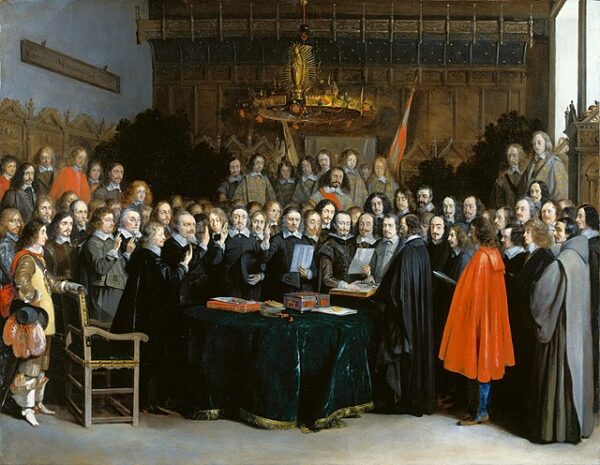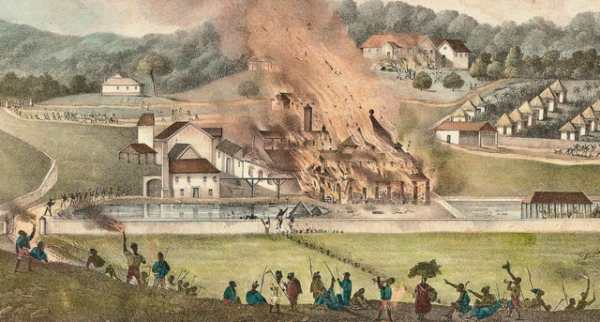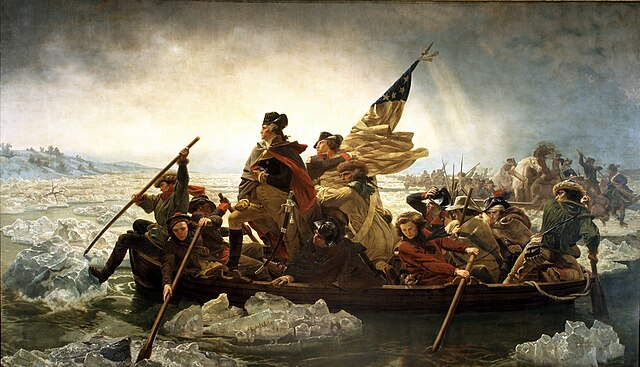The signing of the Peace of Westphalia on October 24, 1648, marked one of the most transformative moments in European—and indeed world—history. Concluded in the German cities of Münster and Osnabrück after years of painstaking negotiation, the treaties ended two interconnected conflicts that had ravaged the continent: the Thirty Years’ War between Catholic and Protestant powers within the Holy Roman Empire, and the Eighty Years’ War between Spain and the Dutch Republic. The result was not merely the cessation of hostilities but the birth of a new international order based on state sovereignty, diplomacy, and religious toleration.
The Thirty Years’ War had begun in 1618 as a local dispute over religious rights in Bohemia but quickly expanded into a continent-wide conflagration involving nearly every major European power. The conflict devastated much of Central Europe—especially the German states—where an estimated one-third of the population perished from battle, famine, and disease. Towns were razed, economies collapsed, and entire regions were depopulated. When peace finally came three decades later, it was not through victory but exhaustion. As one contemporary chronicler observed, “Germany lay in ruins, and all men longed only for quiet.”
Negotiations for peace began as early as 1644, but progress was slow. The warring parties—Sweden, France, the Holy Roman Empire, Spain, and the Dutch Republic—each had their own demands and mutual suspicions. Diplomats gathered in the Westphalian towns of Münster (a Catholic city) and Osnabrück (a Protestant one), symbolizing the delicate religious balance at the heart of the talks. Over 150 delegations participated, making the process one of the first true international congresses in history. The envoys debated for years in an atmosphere of intrigue, ceremony, and delay, hammering out dozens of bilateral treaties that together became known as the Peace of Westphalia.
The settlements that emerged were remarkably comprehensive. For the Holy Roman Empire, the treaties confirmed the principle of cuius regio, eius religio—the ruler’s faith would determine that of his subjects—while adding unprecedented protections for minority worship. Lutheranism, Catholicism, and Calvinism were all legally recognized, ending more than a century of sectarian warfare. Politically, the Empire’s princes gained significant autonomy, effectively transforming the Empire into a loose confederation of nearly independent states. France and Sweden emerged as guarantors of the peace and as the principal beneficiaries of the war, each gaining territory and prestige. Spain, meanwhile, finally recognized the independence of the Dutch Republic, ending the Eighty Years’ War and confirming the Netherlands as a sovereign nation and major commercial power.
The intellectual legacy of Westphalia proved even greater than its immediate political effects. By codifying the sovereignty of states and the equality of their rulers under international law, the treaties established a framework for diplomacy that endures to this day. Historians often describe this as the beginning of the “Westphalian system,” in which states, rather than empires or religious authorities, became the fundamental units of global politics. The Pope’s nuncio protested the treaties, declaring them “null, void, and invalid forever,” but Europe had already moved on. The papal voice carried little weight in a continent now committed to political realism and the balance of power.
The peace also signaled the decline of the Habsburg dream of universal monarchy and the rise of new powers that would dominate modern Europe—France under Cardinal Mazarin, Sweden in the Baltic, and the Dutch Republic across the seas. It inaugurated an age of diplomacy conducted by resident ambassadors, formal treaties, and international congresses, replacing the crusading fervor that had once defined European conflict.
When the final documents were exchanged and the bells of Münster and Osnabrück rang out, there was no triumphant celebration—only relief. After thirty years of unrelenting warfare, plague, and ruin, Europe had finally found a formula for coexistence. The Peace of Westphalia ended the illusion that war could enforce religious unity. In its place, it offered a fragile but enduring alternative: the sovereignty of states, the legitimacy of difference, and the first outlines of the modern world.






